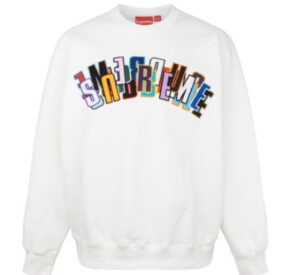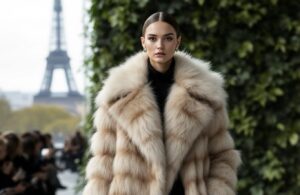Felicity Keefe, a British artist who has captivated audiences with her contemporary landscape paintings, has gained considerable recognition for her innovative approach to depicting the natural world. Her works, deeply rooted in the changing seasons and the British landscape, are imbued with both a sense of tradition and spontaneity, reflecting the timelessness of nature while also embracing its inherent unpredictability. Keefe’s unique methods, including throwing paint and water onto her canvases, set her apart from other landscape artists, allowing her to create pieces that feel both immediate and deeply immersive.
Nature as Inspiration: The Ever-Changing British Landscape
At the heart of Felicity Keefe’s work is a profound connection to the British landscape. Her paintings often explore the subtle shifts in light, color, and texture that occur throughout the seasons, capturing fleeting moments in nature that might otherwise go unnoticed. Whether it’s the soft pastel tones of spring, the lush greens of summer, the golden hues of autumn, or the stark, muted shades of winter, Keefe’s work is a visual ode to the beauty of the natural world.
Keefe’s inspiration is drawn not only from the landscape itself but from the emotional and sensory experiences that come with observing it. In her own words, she seeks to “capture the essence of a place, the way it feels at a particular moment in time.” This focus on the emotional resonance of nature sets her work apart from more literal depictions of the landscape, offering viewers a more intimate and personal experience.
Her work reflects the influence of British Romantic painters such as J.M.W. Turner and John Constable, both of whom were known for their evocative landscapes that captured the mood and atmosphere of the natural world. Like Turner, Keefe is not afraid to push the boundaries of representation, using bold brushstrokes and experimental techniques to convey the drama and intensity of the natural elements. At the same time, her work shares Constable’s love for the British countryside, particularly in the way she captures the quiet beauty of rural scenes.
Impressions and Emotional Resonance: The Viewer’s Experience
What makes Felicity Keefe’s work so compelling is the way it invites viewers to engage with the landscape on a deeper, emotional level. Her paintings are not just depictions of nature—they are expressions of the feelings and sensations that arise when one is immersed in the natural world. The textures, colors, and fluidity of her compositions evoke a sense of movement and change, mirroring the constant flux of nature itself.
One of the most striking elements of Keefe’s work is her use of color. Her palette is often soft and muted, creating a sense of calm and tranquility, but it can also be bold and dramatic, reflecting the more turbulent aspects of nature. This contrast between the serene and the wild is a hallmark of her style, and it mirrors the duality of the natural world—both gentle and fierce, predictable and untamed.
Keefe’s paintings also evoke a strong sense of place. Whether she is depicting a quiet riverbank, a windswept moor, or a dense forest, her work captures the unique atmosphere of each location. This sense of place is heightened by her use of texture, which adds a tactile quality to her work. Viewers often describe feeling as though they could step into her paintings, becoming part of the landscape themselves.
Her most recent works, in particular, have taken this idea of immersion to new heights. By throwing paint and water onto her canvases, Keefe creates a sense of spontaneity and unpredictability, much like nature itself. The resulting splashes and drips of paint mimic the organic patterns found in the natural world—raindrops on a pond, the way light filters through leaves, or the movement of wind across a field. These abstract elements give her work a sense of energy and vitality, inviting viewers to experience nature not just as a static scene but as a living, breathing entity.
The Evolution of Style: Tradition Meets Experimentation
Felicity Keefe’s style has evolved over the years, blending traditional landscape painting techniques with more experimental approaches. While her early works were more restrained, focusing on precise brushstrokes and detailed depictions of the landscape, her recent works have embraced a more expressive, gestural style. This shift reflects her desire to capture the essence of nature rather than simply its outward appearance.
One of the key techniques that define Keefe’s recent work is her use of paint in unconventional ways. By throwing paint and water onto the canvas, she allows the materials to take on a life of their own, creating unpredictable patterns and textures. This technique, which is both deliberate and spontaneous, mirrors the unpredictability of the natural world. It also reflects Keefe’s belief that nature cannot be fully controlled or contained—it is always in motion, always changing.
This method of painting is reminiscent of the action painting techniques used by abstract expressionists like Jackson Pollock, who famously dripped and splattered paint onto his canvases. However, while Pollock’s work was largely non-representational, Keefe’s paintings retain a connection to the landscape. Her abstract gestures are always grounded in a sense of place, creating a dialogue between representation and abstraction.
In addition to her innovative use of paint, Keefe’s work is characterized by its strong sense of texture. She often layers different materials—such as oil, acrylic, and watercolors—to create depth and complexity in her compositions. These layers mimic the natural layering found in the landscape, from the stratified rocks of a cliff to the dense foliage of a forest. This use of texture adds a tactile quality to her work, inviting viewers to not only look at the painting but to imagine what it might feel like to touch it.
Recent Exhibitions: Keefe’s Rising Influence
Felicity Keefe’s recent exhibitions have garnered critical acclaim, both in the UK and internationally. Her work has been featured in galleries across the country, from London to Edinburgh, as well as in exhibitions abroad. These shows have introduced her work to a wider audience, and she is quickly becoming recognized as one of the most exciting contemporary landscape painters working today.
One of the highlights of her recent exhibition schedule was a solo show in London, where her newest series of landscape paintings was met with rave reviews. Critics praised her ability to capture the “raw energy” of the natural world, as well as the emotional depth of her work. Several pieces from this exhibition were acquired by private collectors, further cementing Keefe’s status as an artist to watch.
Keefe’s international presence has also been growing, with her work being shown in galleries across Europe and North America. Her ability to convey the universal experience of nature—while also grounding her work in the specific landscapes of the British Isles—has resonated with audiences around the world. As climate change and environmental issues continue to dominate global conversations, Keefe’s work feels particularly relevant, reminding viewers of the beauty and fragility of the natural world.
Felicity Keefe’s recent works reflect her ongoing exploration of the natural world and her evolving approach to landscape painting. By blending traditional techniques with experimental methods, she has created a style that is uniquely her own—one that captures both the timeless beauty of the landscape and the unpredictability of nature. Her use of color, texture, and abstraction invites viewers to engage with her work on a sensory and emotional level, offering a new way of experiencing the natural world.
As her career continues to rise, Keefe’s work will undoubtedly leave a lasting impression on the contemporary art world. Her paintings serve as both a celebration of nature’s beauty and a reminder of its power, inviting us all to pause, reflect, and appreciate the world around us.
No comments yet.








